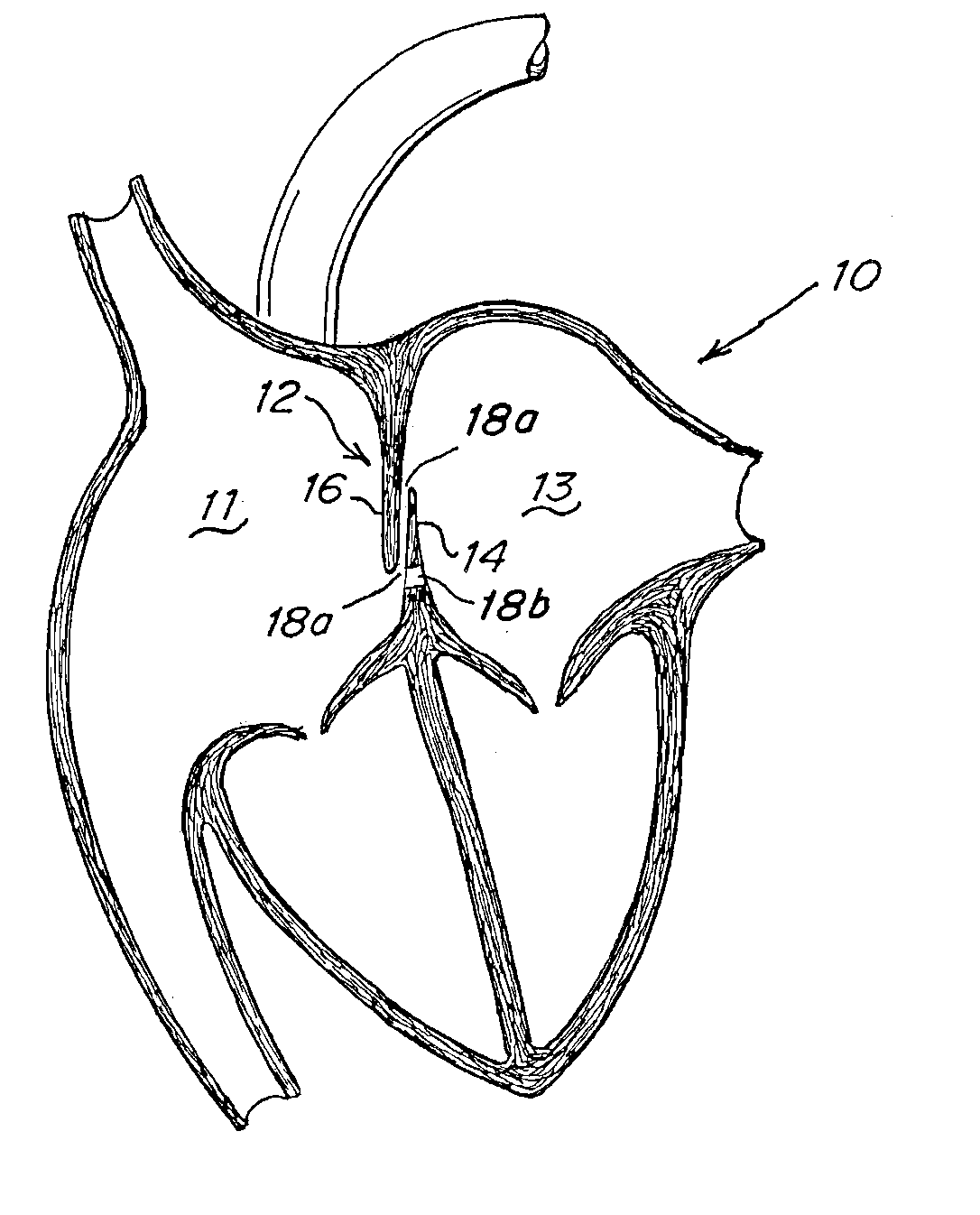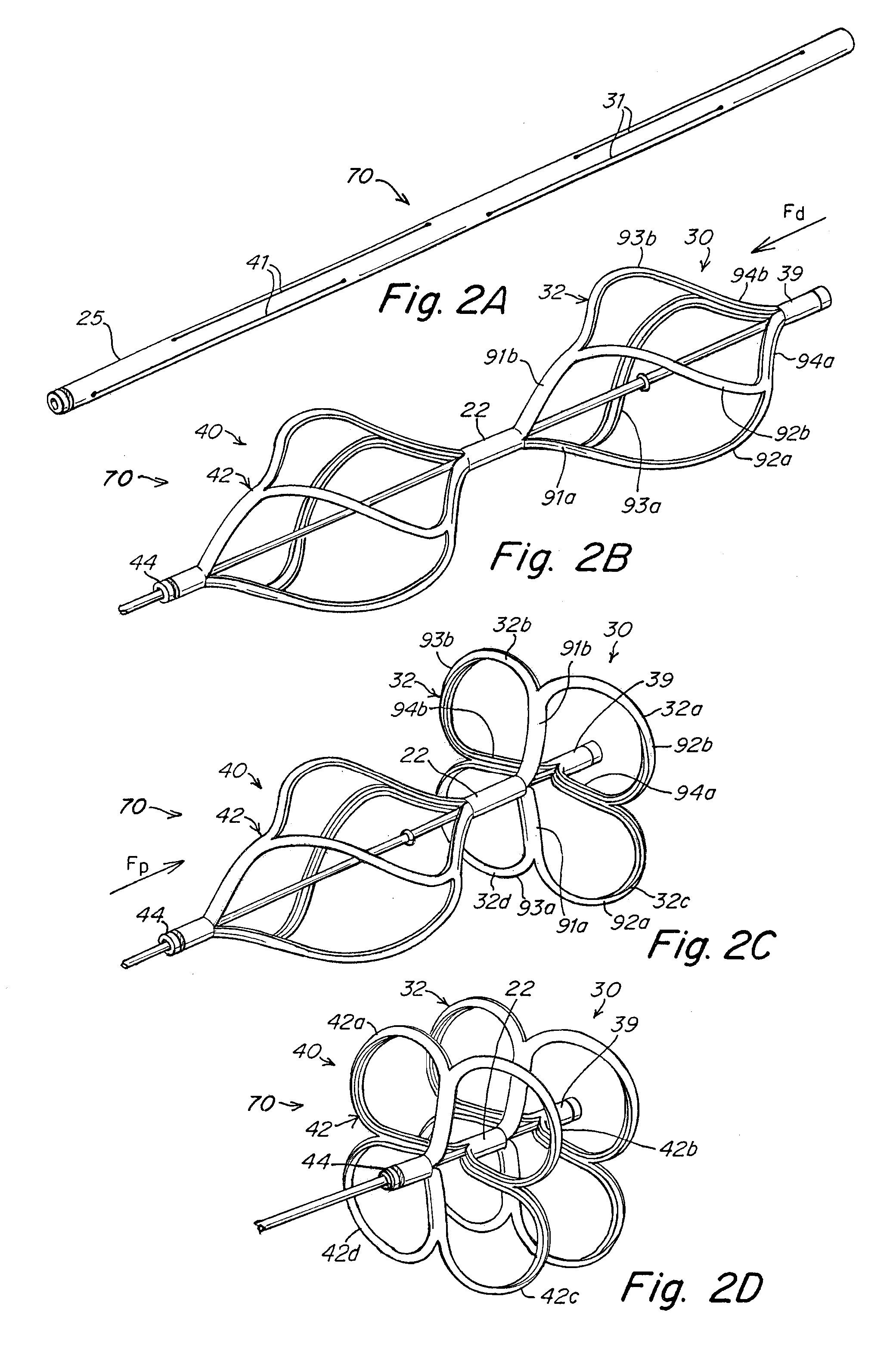Implant-catheter attachment mechanism using snare and method of use
a technology of catheter and attachment mechanism, which is applied in the field of occlusion devices, can solve the problems of recurrent cerebrovascular events, adverse side effects, and umbrella devices and the like that are designed for asds that are not optimally suited for use as pfo closure devices
- Summary
- Abstract
- Description
- Claims
- Application Information
AI Technical Summary
Benefits of technology
Problems solved by technology
Method used
Image
Examples
embodiment 600
[0133] FIGS. 34A-C illustrate an alternative embodiment 600 of an occluder delivery system using a delivery wire with an alternative second securement system. In this embodiment, the proximal end of the catch element screws onto the proximal end of the occluder to secure it at a deployed configuration. FIG. 34A is an exploded perspective view of a catch member 650 and first securement system 610. Catch member 650 can be disposed in the radially central portion of the occluder 70, and includes a distal flange 652, a proximal end 654, and a catch body 656. The flange 652 rests against the distal end of the occluder 76 as described above, for manipulating the occluder 70 during delivery and / or retrieval and for catching the occluder 70 in the deployed position. The distal end of the catch member 650 is allowed to rotate freely relative to the occluder 70, as described below. The proximal end 654 of the catch member 650 includes external threads 656 that cooperate with internal threads ...
embodiment 800
[0142]FIGS. 41 and 42 illustrate an alternative embodiment 800 of an occluder delivery system for occluder 820 and catch member 830, employing an alternate second securement system. FIG. 41 shows a close-up view of the distal end of the catheter portion 800 of the delivery system 850. Delivery catheter 802 is a dual-lumen catheter that comprises a first, center lumen 804 and a second side lumen 810. A delivery wire 806 is contained in the center lumen 804. The delivery wire 806 includes an internally threaded portion 832 on its distal end 808. The internally threaded portion 832 cooperates with an externally threaded portion 834 on catch member 830 to form a threaded connection that provides a first securement system, as discussed with reference to FIG. 8, for example. Although the embodiment illustrated in FIGS. 41 and 42 incorporates this threaded first securement system, any first securement system that provides the needed delivery, deployment and / or retrieval features may be use...
PUM
 Login to View More
Login to View More Abstract
Description
Claims
Application Information
 Login to View More
Login to View More - R&D
- Intellectual Property
- Life Sciences
- Materials
- Tech Scout
- Unparalleled Data Quality
- Higher Quality Content
- 60% Fewer Hallucinations
Browse by: Latest US Patents, China's latest patents, Technical Efficacy Thesaurus, Application Domain, Technology Topic, Popular Technical Reports.
© 2025 PatSnap. All rights reserved.Legal|Privacy policy|Modern Slavery Act Transparency Statement|Sitemap|About US| Contact US: help@patsnap.com



